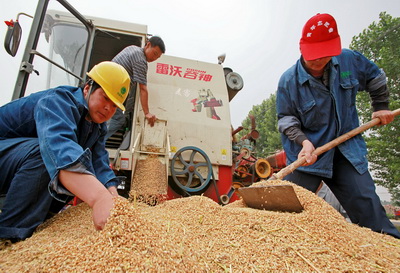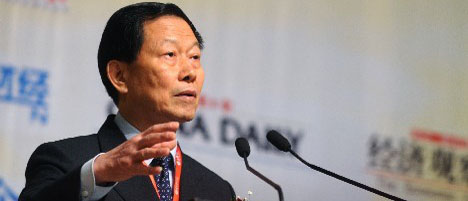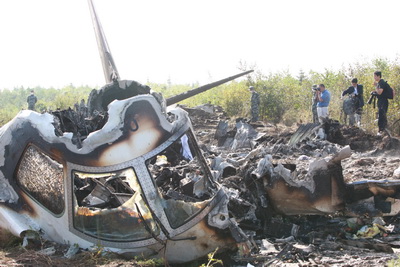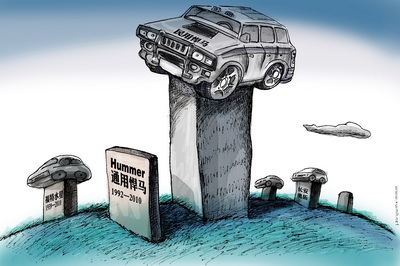

Highlights from the EO print edition, Issue Wrap No. 484, August 30
Who's Buying Government-subsidized Housing?
Cover
~ On April 20, a senior official from the General Office of the State Council inspected a government-subsidized housing complex in Beijing's Haidian district, while making a tour of the residential area, the official spotted a parked BMW. He ordered the officials who had accompanied him to find out who the car belonged to.
~ A source familiar with the matter told the EO that the inspection revealed that the car belonged to a resident of the housing complex.
~ It might seem a little strange that the owner of a government-subsidized property can also afford a BMW but the EO has discovered that many of the government-subsidized housing developments in Beijing, which in theory, should only be sold to low- and mid-income families with Beijing a hukou, is actually being purchased by public servants.
~ Take Haidian district for an instance, of the 3,725 applications for government-subsidized housing that we acquired, over 61 percent of the individuals applying had some kind of public service background.
Original article: [Chinese]
Central Government to Provide Financial Support to Chinese Grain Sector
News, page 3
~ Volatility of grain prices and the potential concern about how much grain is being produced and stored in reserves has attracted the attention of China's central government.
~ The Standing Committee of the National People's Congress discussed the issue at their most recent gathering.
~ China National Association of Grain Economics and China National Association of Grain Sector have also released a report forecasting future fluctuations in the price of grain that are likely to have an impact on the sector.
~ To ensure a secure supply, the central government is considering establishing an investment mechanism that's government backed but also draws funds from other players. The government is also considering preferential policies and encouraging investment from other private and institutional investors.
~ According to the above report, periodical fluctuations in the grain sector can mainly be attributed to changes in national policy. Every 1 percent increase in grain prices corresponds to a 0.2 percent change in grain output; a 1 percent increase in the fiscal revenue invested in the gain sector results in a 2 percent rise in grain output.
Original article: [Chinese]
Looking Back on Li Rongrong's Seven Years at SASAC
News, page 4
~ On August 24, Li Rongrong, born in 1944, announced his retirement from his role as director of the State-owned Assets Supervision and Administration Commission (SASAC); Wang Yong, former director of the General Administration of Quality Supervision, Inspection and Quarantine, will take over his position.
~ Since SASAC was established in 2003, Li has trimmed down the number of centrally-owned enterprises (COEs) to 123 from the 196 that existed when he first assumed the post. On his watch, the total worth of these COEs surged from 3 trillion to 20 trillion yuan.
~ In addition, during his term, the number of China's COEs that made it onto the list of the world's largest 500 enterprises rose from from 6 to 30.
~ Furthermore, Li also advocated for improvements in corporate goverance and oversaw the establishment of company boards among 32 of the COEs he oversaw.
~ Li thinks of himself as a loyal minister, loyal to the party, to the country and to himself.
~ However, his term in office has not been without controversy, some economists have criticised the trend which saw the "advance of the state at the expense of the private sector" (guojinmintui) and also the excessive salaries that were being paid to some senior executives at COEs on Li's watch.
Original article: [Chinese]
Ministry of Railways to Invest 400 Billion Yuan in Railway Construction
News, page 5
~ By the end of August, the tendering process of construction projects under the Ministry of Railways will be complete. The projects, worth a total of 400 billion yuan, will be constructed by the China Railway Group Ltd, China Railway Construction Group Co. Ltd, China Construction Group and other state-owned enterprises.
~ According to the 2010 work plan of the Ministry of Railway, the Ministry will invest 823.5 billion yuan in constructing over 90,000 kilometers of railways. Over 120 billion yuan of the total investment will be used to buy trains and other equipment; the remaining 700 billion yuan will be invested in basic construction.
~ According to a source with the Ministry of Railways, the Ministry is only responsible for investing 51 percent of the total expense of railway construction, the remaining 49 percent will be left to local governments.
~ Cities that are to be linked to the country's rapidly expanding high-speed railway network will also be required to put forward some of the capital for construction.
Original article: [Chinese]
Shandong Local Government Reclaims Undeveloped Plot of Land
Nation, page 9
~ On August 23, Binzhou municipal government in Shandong province decided to take back a plot of land of approximatelty 14 hectares that had been sold to Binzhou Xincheng Investment Company five years ago.
~ The decision came only four days after the central Ministry of Land and Resources published on its website the details of six plots of land that had been auctioned off long ago but that still remained undeveloped.
~ The EO learned that the company was established by the city's Economic Development Zone Administrative Commission, headed by Yu Zhigang, a vice mayor of Binzhou.
~ The company had planned to turn the land in question into a street for local financial institutions. But despite several drafts, the construction plans still failed to meet municipal government demands and the land remained idle.
Original article: [Chinese]
Shanghai and Shenzhen Stock Exchanges to Build New Headquarters
Market, page 17
~ The Shanghai Stock Exchange and Shenzhen Stock Exchange are in the process of constructing new office buildings. It's estimated that the Shanghai Financial Exchange is will spend 5.5 billion yuan on new buildings, while the operation center of the Shenzhen Stock Exchange has a construction budget of over 3 billion yuan.
~ Although both stock exchanges claim to be non-profit institutions, their new buildings are expected to be even more impressive than those of Wall Street.
Original article: [Chinese]
Tencent Acquires Comsenz
Corporation, page 25
~ Tencent Holding Company has recently acquired Comsenz, the development company of China's most popular BBS system.
~ The EO understands the deal to be worth over 60 million US dollars.
~ Tencent may be looking to integrate its services such as QZone and its microblogging service with Comsenz's Discuz platform.
~ Tencent is also likely to take advantage of Discuz to promote its Paipai e-commerce platform in order to better compete with Alibaba.
Original article: [Chinese] 
The Back Story to the Yichun Plane Crash
Corporation, page 28
~ While other airlines had all cancelled their evening flights from Harbin to Yichun, an airline captain with Henan Airlines attempted his first flight along this route on August 24, the resulting crash claimed the lives of 42 passengers and injured another 54.
~ Although responsibility for the crash is already being placed at the feet of Henan Airlines, we should also be looking at the role played by "Heilongjiang Route Virtual Airline Company" (黑龙江支线模拟航空公司 Hēilóngjiāng Zhīxiàn Mónǐ Hángkōnggōngsī), a company invested in by the Heilongjiang Airport Group, the provincial government of Heilongjiang and several city-level governments, including the Yichun Municipal government.
~ This "virtual" airline company had reached a long term agreement with Henan Airlines to rent aircraft and staff to fly the Harbin-Yichun route and other routes connecting smaller cities to the provincial capital of Harbin. The flight that crashed on Aug 24 had been hired as part of this arrangement.
~ The virtual airline company had only begun offering services along the route about 2 months before the crash and the official route - which determines the flight path of the route, had been designed by the very same company.
~ In early August, the Heilongjiang branch of Southern Airlines stopped night flights into Yichun from Harbin due to safety concerns.
Original article: [Chinese]
"National Team" of Green Car Manufacturers Face Gloomy Prospects
Automobile, page 35
~ The State-owned Asset Supervision and Administration Commission has established a national team to manufacture electric cars in China. But China's electric car industry is not making as much progress as expected.
~ Three Chinese state-owned car manufacturers, First Automobile Works (FAW), Dongfeng Motor Comporation and China Chang'an Automobile Group, have invested a large amount of capital in manufacturing a range of electric cars. However, the three companies have yet to produce a final product to be sold.
~ It will also be difficult for these manufacturers to meet their target of selling two million of the five million electric cars that are expected to be on Chinese roads by 2020.
~ The state-owned car makers have previously failed to cooperate on developing electric cars. There is doubt about whether the companies will be able to work together this time.
Original article: [Chinese]
The Last Hummer
Automobile, page 36
~ A Hummer distributor in Beijing told the EO that General Motors has been unable to find a suitable buyer for the Hummer brand and has therefore decided to let the brand die.
~ On August 25, the EO paid a visit to a Hummer dealer in Beijing to see the last Hummer H2.
~ The car had already been sold. The EO learned the buyer spent nearly 1.6 million yuan, a premium of 250,000 yuan on the normal sale price.
Original article [Chinese]

